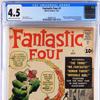Impressionism and the Caribbean: Francisco Oller and His Transatlantic World at Brooklyn Museum
- BROOKLYN, New York
- /
- October 28, 2015

The painter Francisco Oller (Puerto Rican, 1833-1917) contributed greatly to the development of modern art in both Europe and the Caribbean and revolutionized the school of painting in his native Puerto Rico. The exhibition Impressionism and the Caribbean: Francisco Oller and His Transatlantic World (through Jan. 3, 2016) at Brooklyn Museum is the first U.S. exhibition to present Oller’s work within both its New and Old World contexts.
Oller emerged from the small art world of San Juan in the 1840s, spending twenty years in Madrid and Paris, where he was inspired by the art of Gustave Courbet and joined the avant-garde circles of such artists as Paul Cézanne, Camille Pissarro, and Claude Monet. While European Romanticism, Realism, and Impressionism formed a critical jumping-off point for Oller’s aesthetic, his most important source of inspiration was Puerto Rico, where he painted tropical landscapes, still lifes with indigenous fruits and vegetables, and portraits of distinguished artists and intellectuals.
Impressionism and the Caribbean: Francisco Oller and His Transatlantic World is organized by Richard Aste, Curator of European Art, Brooklyn Museum, and Edward J. Sullivan, Helen Gould Sheppard Professor of the History of Art, New York University.
Edward J. Sullivan’s book From San Juan to Paris and Back: Francisco Oller and Caribbean Art in the Era of Impressionism (2014) accompanies the exhibition.
















